

Catalogs of the Seventies
The general catalogs published during the 70s were the following: 1970, 1972, 1973, 1975, 1976, 1977, 1978, and 1979. In 1971 a supplement to the 1970 catalog was published, and there was no catalog published in 1974.
Photos of their respective covers are shown below.
| Cover of the 1970 decade catalogs available in the HP Memory collection |
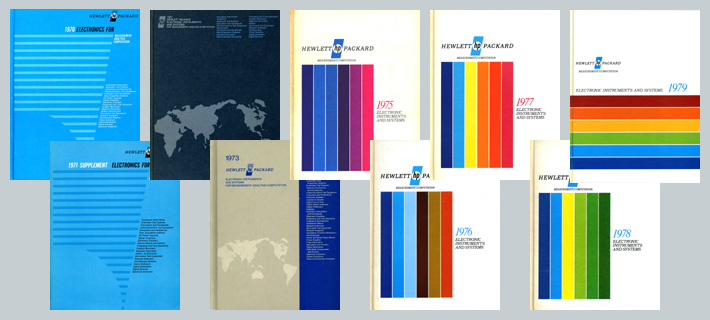 |
Scans Available
The scans of almost all published Hewlett Packard Catalog are downloadable from Glenn Robb's website
But please be aware of the warning shown below. It was published in the January 1973 Measure Magazine, announcing the publication of the 1973 general catalog.
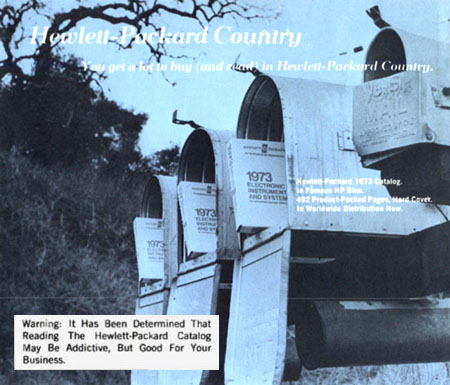 |
| From MEASURE Magazine January 1973 Courtesy of the Hewlett Packard Company |
HP Scientific Pocket Calculators,
The Star Products in Many Issues of the 1970s Hewlett Packard Journal
The success of the HP pocket calculators, and the fast grow of this product line, generated many Hewlett Packard Journal articles during the 1970s.
 Introducing the HP-35 - World's First Scientific Pocket Calculator
Introducing the HP-35 - World's First Scientific Pocket Calculator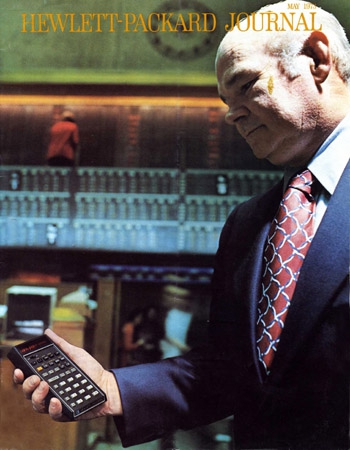 Introducing the HP-80 - Business & Finance Pocket-Sized Calculator
Introducing the HP-80 - Business & Finance Pocket-Sized Calculator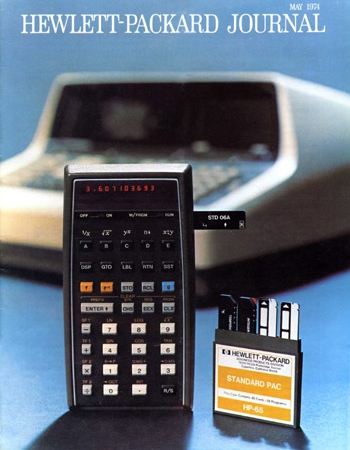 Introducing the HP-65 - World's First Programmable Pocket Calculator
Introducing the HP-65 - World's First Programmable Pocket Calculator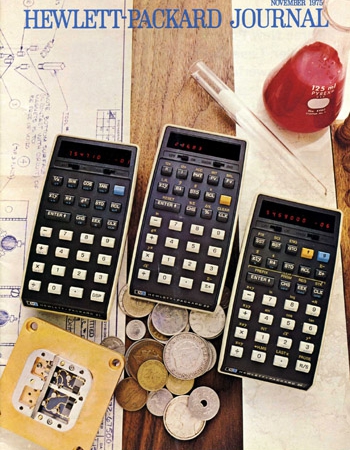 HP-21, HP-22, and HP-25 - Three New Low-cost Pocket Calculators
HP-21, HP-22, and HP-25 - Three New Low-cost Pocket Calculators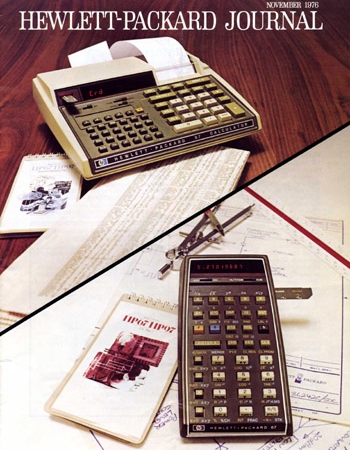 The HP-67 & HP-97 - A Pair of Program-Compatible Personal Calculators
The HP-67 & HP-97 - A Pair of Program-Compatible Personal Calculators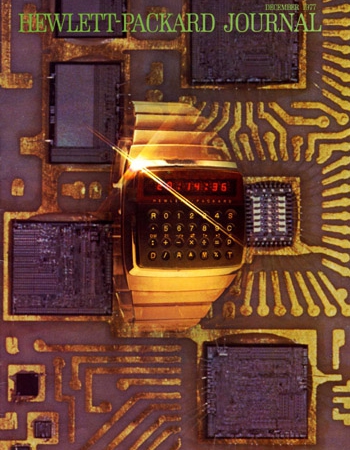 Introducing the HP-01 - World's First Digital Wristwatch
Introducing the HP-01 - World's First Digital Wristwatch
New Concepts Often Do Not Gain Easy Acceptance,
With the birth of the microprocessor, Logic Analysis was another very innovative technique which HP pioneered during the 70s, and 80s.
In this evolutionary period, engineers were far from enthusiastic users of the logic analyzer. The concept had not yet been accepted as a common practice. The oscilloscope remained popular, although design though design leaders started to embrace the new concepts.
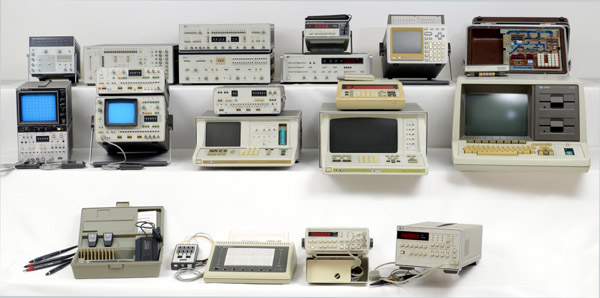 |
| Some of the innovative Logic Analyzers introduced by HP during the 1970s, and beginning 1980s HP Memory Collection |
After the introduction of the first Logic State Analyzer, HP R&D Labs, Marketing Services, and Field Sales Force, still had to create technology teaching efforts to convince their customers of the importance of the Data Domain Revolution. They multiplied the number of publications, to help engineers change their thinking about logic circuitry design. The sales-aid document shown below, is a good illustration of this effort.
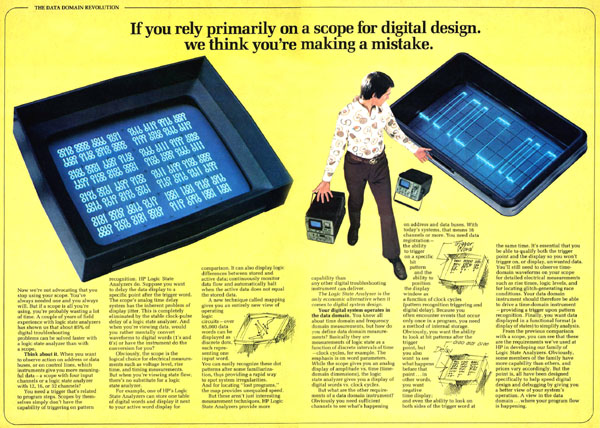 |
| "Join the Data Domain Revolution," a 1975 Commercial Document Click in Picture to download the PDF |
HP-IB, Another Popular Publication Topic
The Hewlett Packard Interface Bus, introduced early in the 1970s, was another innovation that needed considerable technology teaching efforts. HP-IB opened the world of System Design, rather than using various benchtop instruments independently. Providing the engineer with the necessary information to be comfortable with such a new concept, generated a huge amount of dedicated documents.
 |
Tutorial Description of the Hewlett-Packard Interface Bus Courtesy of the Hewlett Packard Company |
Tutorial Description
of the Hewlett-Packard Interface Bus
This coursebook is a tutorial description of the technical fundamentals of the Hewlett-Packard Interface Bus. It's intended to provide a thorough overview of HP-IB basics for the first-time HP-IB system designer, programmer, or user. It should be useful to instrument, computer, and system oriented engineers or technicians for either self-study, technical reference, or as an index for further research. In short, it's a broadband tutorial for learning about the Hewlett-Packard Interface Bus. A self-test is located in the rear to provide a means of measuring your performance.
 |
Cover of a 1975 HP-IB Marketing Document Courtesy of the Hewlett-Packard Company |
Marketing the Hewlett Packard
Interface Bus
This document listed the instruments, controllers, and accessories that were available in April 1975 for do-it-yourself HP-IB system solutions.
It is also a short-form course on the basics of HP-IB.
April 1975 HP-IB Marketing Document ( PDF, 1.4 Mb )

Bench Briefs
Hewlett-Packard's "Bench Briefs" magazine was a long running periodical dedicated to service personnel and equipment maintenance. Articles typically discussed advanced troubleshooting techniques, basic electronic theory (as applied to the service bench), important service tips for current HP equipment, and indexes of parts cross-references and Service Notes. It started at the end of the 1950s, and running until 1998.
The 1960 and 1970 decades were the peak period of Bench Briefs publication, with over 100 issues published.
The scans of many published Bench Briefs magazines are downloadable from Glenn Robb's website
The Start of Many Other Publications for the Following Decades:
The 1970s marked the start of many other Hewlett Packard publications. Some were Customer oriented, some were "Internal Only", used to give HP's technical, marketing or sales personnel confidential information about company related activities and guide lines.
Many of these publications have been scanned and are available from various sources on the net. Some of them are listed in the Resources Section of this website.


 1
1 2
2 3
3 4
4 5
5 6
6
